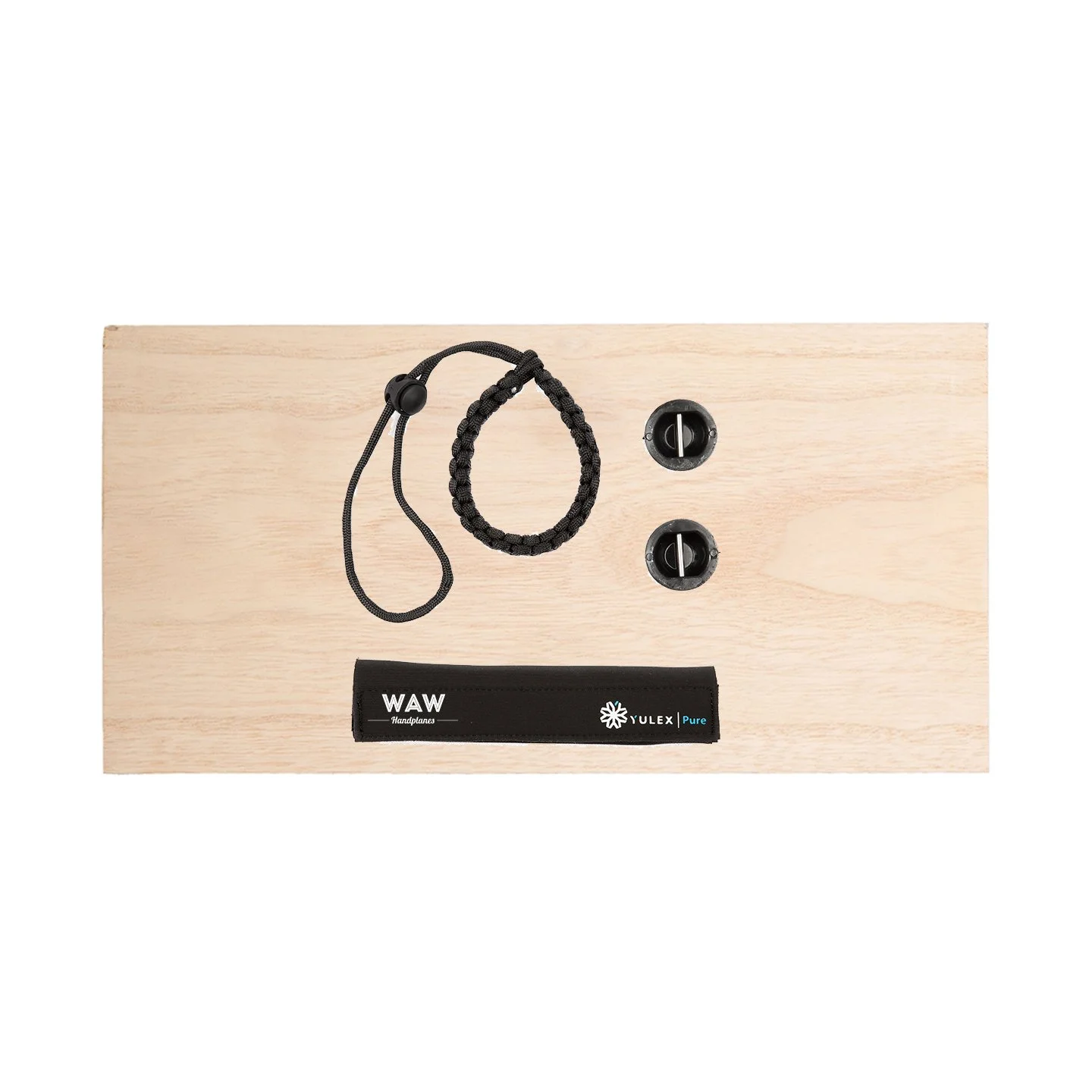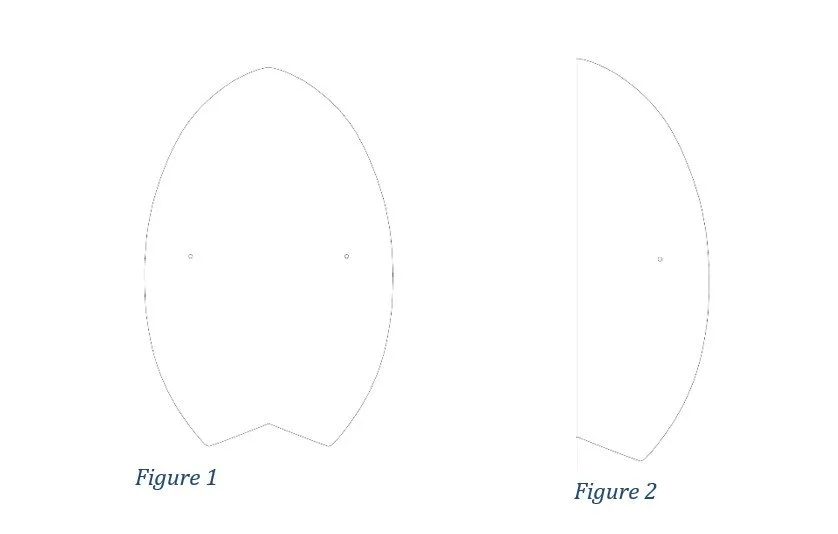How to shape a body surfing hand plane
Making your own bodysurfing handplane is very personal thing and applying your own shapes, styles and contours is what it’s all about, but here are a few simple steps that will help your handplane stand out in the line up.
(Don’t have a bodysurfing DIY kit yet? Orders yours from the bottom of this article)
Step 1.
Set your plugs. Using a two-part epoxy resin, set your strap plugs into the holes provided making sure the metal pins are perfectly aligned and angled vertically (top to bottom) on your timber blank. The resin will need around 12 hours to cure.
Step 2.
Create your template. When creating your template either print an image of a handplne shape you like and trace around it. Or if you want to create your own design grab some A3 paper and cut it so that is 20cm wide by 40cm high (this is the size of your blank).
Once cut, fold the paper in half long ways to give you a centerline to work with. Play around with some shape ideas. Think surfboard design styles, rounded noses and hydrodynamic edges and tails., bearing in mind that ideally, you want your handplane to be around 20cm wide and between 30 and 40cm long.
You should end up with something similar to FIGURE 1, but feel free to be creative.
Once you have an overall shape that you are happy with, cut out half of the template stopping at the center line of your paper so you have something like FIGURE 2
Step 3.
Sketching out your handplane on the blank.
Once the resin is set on your blank, sand back any excess dried resin and create a smooth surface on the top of your bank to sketch out your handplanes outer shape.
To do this measure the top and the bottom of your timber blank and mark the center spots with a pencil. With these center points you can draw a center line top to bottom on your timber blank.
Using this center line and your half template (figure 2) trace the outer edge of your template on the handplane making sure to line up the center lines of your template and blank. When working out where to have the strap plugs in relation to your template, you want have the plugs sit either in the center or slightly favored towards the nose (top) of you handplane. Avoid making the plugs sit in the lower half of your handplane as this will significantly impact its performance.
Once you’ve traced around one half, simply flip your template over and repeat on the other side. This should give you a perfectly symmetrical outer line of your handplane.
Step 4.
Cut out your handplane shape using a jigsaw or bandsaw, leaving a 1mm gap outside of your sketched line
Step 5.
Using a surform, power sander or 80-grit sandpaper, sand the edges of your cut back to the sketched line, making sure the handplane remains symmetrical.
Step 6
Apply your desired contours and rails using power sanding, planing, or chiseling techniques, whichever methods you desire. The best handtool I’ve discovered for the concave is the Carvers Spoon Plane, and for the rails id recommend the block plane.
A flat bottom hand plane will still work, but generally, even a slight concave will improve the bodysurfing performance of your handplane.
When using sandpaper, work your way up from 80 grit, 120 and finally 240 grit to ensure a smooth finish.
Step 7.
Using a block plane or a power sander, create entry rocker (a turned-up nose). You need to turn the nose of your board up at the front end (think surfboard design), this will help to force the water in under your handplane when you’re moving forward (you don’t want your body surfing hand plane to dig in and be forced under the water when riding a wave)
(Don’t be afraid to spend a large amount of time on steps 6 and 7, as these are the most important steps and where you can be nice and creative)
Step 8. IMPORTANT!
Once you’ve acquired your desired shape and sanded it very smooth. Its time to give your handplane a wash. Run the handplane under the tap for a few seconds ensuring the entire surface has been wetted. Then leave to dry. This will ‘pre raise the grain’ and it will make your handplane appear all fury. If you don’t do this now it may happen when you apply your first coat of oil or varnish. Once dry, sand this back to smooth and you’re ready to finish and seal your handplane.
Step 9.
It’s time to seal your masterpiece. The easiest option here is to use boiled linseed oil with antimould. It’s very easy to apply. Simply use a brush or cloth and coat the hand plane in the oil. Leave this coat to dry for at least 2 hours before applying a second coat and repeat for a third coat. The third coat will take 24 hours to dry fully (do not use your handplane within this 24 hours.)
For a more durable finish you can use a polyethylene varnish but please note this is much harder to apply
Step 10
Apply your strap.
With the handstrap provided starting on the left-hand side thread the webbing through the metal pin in the strap plug and pull it all the way through until it hits the rubber part. (this may be tough to do, so give it a good pull). Then thread the webbing end through the right-hand plane plug. Place your hand under the strap on the handplane and sinch close the velcro over your hand. Remove your hand and wrap the rubber part under the velcro and around the front and sinch down on the top so that all the webbing and velcro is covered.
Finally, loop through your safety wrist leash and you’re good to go!
Step 11.
Go get barreled.
Step 12.
Take a photo and tag us in it to be featured on our Instagram. @wawhandplanes
Good luck,
Rikki,
WAW Handplanes Founder and CEO.









